How to Write Email
How to Write a Professional Email Reminder to Your Professor
Frustrated with unanswered emails? Learn how to craft a compelling reminder email to your professor for a prompt response.

We’ve all experienced it – a hectic week filled with numerous tasks, and then suddenly, the project deadline is just around the corner. You find yourself in need of some essential details from your professor, yet there’s been no reply to your first email.
Crafting a reminder email to your professor can be a delicate task, requiring a balance of assertiveness and respect. It's essential to consider the best approach to ensure your message stands out without coming across as pushy or demanding.
So, how do you strike that balance and ensure your reminder email gets the attention it deserves? Well, let's explore some effective strategies to master the art of writing a reminder email to your professor.
Key Takeaways
- Clearly explain the reason for the follow-up
- Reiterate the importance of the matter
- Express gratitude for the professor's time and attention
- Reflect positively on the sender
Understanding the Purpose
Understanding the purpose of writing a reminder email to a professor is essential for effectively communicating your needs and showing respect for their time. When crafting a polite follow-up email to a professor, it's important to ensure that the email serves as a gentle reminder rather than an imposition.
The original email likely mentioned getting in touch for a specific reason, and a polite follow-up can help speed the process along. It's important to clearly explain the reason for the follow-up, reiterating the importance of the matter and expressing gratitude for the professor's time and attention.
In writing a reminder email to a professor, the key is to be respectful and considerate. It's crucial to avoid sounding demanding or entitled and instead, convey a tone of appreciation and understanding. By doing so, the email not only serves its purpose of gently reminding the professor but also reflects positively on the sender.
Understanding the purpose of the email and approaching it with a polite and respectful tone is fundamental in effectively communicating with professors.
Setting the Right Tone

When composing a reminder email to a professor, it's crucial to set a respectful and professional tone that aligns with the formality of the professor's communication style. This ensures that the email conveys courtesy and appreciation for the professor's time and expertise.
To achieve this, consider the following:
- Be courteous and polite: Express gratitude for the professor's guidance or feedback in your email.
- Use respectful language: Address the professor using their appropriate title and maintain a formal tone throughout the email.
- Show consideration for the professor's time: Keep the email concise and to the point, demonstrating that you value their time.
- Convey enthusiasm and eagerness: Express your genuine interest in receiving feedback or a reminder of your request, showcasing your dedication to the subject matter.
Structuring Your Email
Regarding the structuring of your email, emphasizing clarity and directness in your communication will ensure your message is effectively conveyed to the professor.
When composing a reminder email to your professor, it's crucial to structure it in a clear and organized manner.
Begin with a concise and specific subject line that reflects the purpose of your email, such as 'Follow-Up on Meeting Request.'
In the greeting, address the professor using their formal title and last name, for example, 'Dear Professor Smith.'
Clearly state the context of your email and reference any previous communication to provide a reminder of the original discussion or request.
Be explicit about what you're asking the professor to do, whether it's scheduling a meeting, providing feedback, or submitting an assignment.
End the email with a polite closing, such as 'Thank you for your time and attention' or 'Best regards,' followed by your name.
Structuring your email in this manner will ensure that your message is respectful, clear, and easily understandable to the professor.
Polishing Your Email

In crafting a polite follow-up email to your professor, it's essential to pay attention to the finer details of your message, ensuring that it reflects professionalism and respect while effectively conveying your purpose. Polishing your email involves refining the language and structure to create a compelling and respectful message.
Here are some key aspects to consider:
- Tone: Ensure the tone of your email is respectful and courteous, maintaining a professional demeanor throughout the message.
- Clarity: Double-check for any grammatical errors, typos, or confusing language that may detract from the clarity of your email.
- Conciseness: Keep your email brief and to the point, respecting the professor's time while still conveying your request effectively.
- Gratitude: Express your gratitude for the professor's time and consideration, reinforcing a positive and respectful tone in the email.
Ensuring Professionalism
We maintain a formal and respectful tone in our email communications with professors to ensure professionalism and convey our message effectively. When writing a reminder email to a professor, it's crucial to uphold a high level of professionalism. This includes using a clear and concise subject line that accurately reflects the purpose of your email.
Proofreading for spelling and grammatical errors is essential, as these can detract from the professional image you want to project. It's important to avoid using casual language, slang, or emoticons in your communication, as these can be seen as unprofessional.
Expressing gratitude and appreciation for the professor's time and consideration is also key to maintaining a professional tone. Furthermore, it's a good practice to reiterate any important points in your email to ensure that your request is received and addressed.
Frequently Asked Questions
How Do You Politely Send a Reminder Email?
We politely send a reminder email by acknowledging the recipient's busy schedule.
We express our understanding of their workload and reiterating the importance of the matter at hand.
It's crucial to maintain a respectful tone and avoid sounding demanding.
We can also offer additional assistance or information if needed, showing our willingness to collaborate.
Ultimately, a polite reminder email conveys our professionalism and consideration for the recipient's time.
How Do You Politely Resend an Email to a Professor?
We politely resend an email to a professor by first reviewing the original message for clarity and conciseness.
Then, we craft a polite follow-up email, acknowledging the previous correspondence and restating the request or question.
It's important to express understanding of their busy schedule and to offer flexibility for a response.
This demonstrates professionalism and respect for the professor's time while ensuring the message is received.
How Do I Write an Email With a Reminder?
We write reminder emails to professors to prompt a response or follow-up on a previous email. It's important to be polite and professional in our approach, considering the professor's busy schedule. We can mention the original email, express gratitude, and restate our request clearly.
Avoid being pushy or demanding. A well-crafted reminder email can help us maintain a good rapport with our professors and ensure our needs are addressed.
How Do You Say Reminder in a Formal Email?
In a formal email, a polite way to say 'reminder' is by using phrases like 'just a gentle nudge' or 'a quick follow-up.' These expressions convey the message respectfully without coming across as pushy or demanding.
It's important to maintain professionalism and courtesy when sending reminders to professors. By using considerate language, we can effectively communicate our need for a response while showing respect for the recipient's time and priorities.
Conclusion
As we craft our reminder email to our professor, let's remember to approach it with the gentle touch of a painter, delicately adding the final strokes to create a masterpiece.
Our words should be like a soothing melody, resonating with gratitude and respect.
With each carefully chosen phrase, we paint a picture of professionalism and consideration, ensuring our message is received with warmth and understanding.
Erik – Email, SEO, AI Expert Writer Erik is the strategist, the thinker, and the visionary. His role at Influenctor is pivotal in integrating SEO with AI-driven content strategies. With an extensive background in email marketing and a profound understanding of search engine algorithms, Erik develops innovative strategies that elevate our client’s online presence. His work ensures that our content is seen, felt, and remembered.
How to Write Email
Vacation Email Etiquette: How to Write with Politeness
Struggling to craft the perfect vacation email? You'll want to keep reading for essential tips and strategies to nail it.

So, we’re all familiar with the routine of composing a professional out-of-office email, correct? Actually, perhaps not.
While the idea of taking time off sounds like a breeze, the art of communicating that to your colleagues can be a bit more complex.
But fear not, because we've got some key tips and strategies to help you navigate the ins and outs of drafting the perfect out-of-office message.
Whether it's setting clear expectations or ensuring your absence won't disrupt the team's workflow, there's a lot to consider when it comes to mastering the art of the vacation email.
Key Takeaways
- Include specific details such as dates of absence, expected return date, and urgent instructions in the vacation email.
- Clearly communicate dates of absence in the out-of-office message and provide alternative contacts for urgent matters.
- Maintain a professional tone in all communication and convey professionalism and reliability in the out-of-office message.
- Understand company vacation policy and use appropriate request email templates, while also considering the impact on workload and showing consideration for the team when requesting time off.
Essential Components of a Vacation Email
When crafting a vacation email, it's essential to include specific details such as the dates of your absence, your expected return date, and any necessary instructions for urgent matters. A concise subject line should indicate that it's an informal vacation request. In the body of the email, maintain a professional tone to ensure a smooth and clear communication process.
In the first paragraph, clearly state the purpose of the email – to request vacation time. Provide the dates of your absence, including the start and end dates, and your expected return date. This information helps the recipient understand the duration of your absence and plan accordingly.
Additionally, if there are any specific instructions for urgent matters during your absence, make sure to include them in the email to ensure that any critical issues can be addressed in your absence.
Crafting a Professional Out-of-Office Message
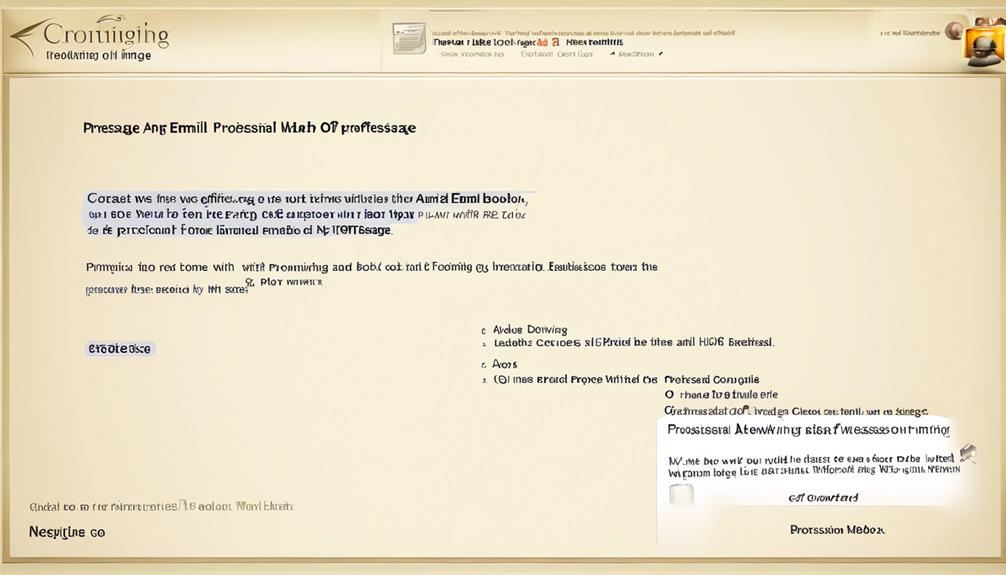
After requesting vacation time, it's important to also craft a professional out-of-office message that clearly communicates the dates of absence and provides alternative contacts for urgent matters.
When writing the out-of-office message, it's essential to ensure that it conveys a sense of professionalism and reliability. Clearly state the dates of your absence and provide an alternative contact in case of urgent matters.
It's good practice to express gratitude for understanding and cooperation during your leave. Additionally, offer to follow up on any pending matters upon your return to reassure colleagues and clients that their issues will be addressed promptly.
While crafting the message, it's important to adhere to company communication standards and policies to maintain consistency in tone and content. Avoid sharing unnecessary personal details in the out-of-office message to maintain a professional tone.
Writing a good out-of-office message is crucial as it reflects your commitment to professionalism and ensures that important matters are attended to in your absence.
Setting Expectations With Colleagues and Clients
To ensure smooth communication during my absence, we will clearly communicate our availability and response times for emails and calls to colleagues and clients. It's crucial to set realistic expectations and maintain a professional tone in all communication. Here is a simple table to help you craft a professional email and set expectations with your colleagues and clients:
| Information to Include | Example |
|---|---|
| Availability during vacation | I will be out of the office from [start date] to [end date]. |
| Response times for emails and calls | I will have limited access to emails and will respond within 24-48 hours. |
| Delegated responsibilities | Please contact [colleague's name] for any urgent matters. |
| Contact information | For immediate assistance, please reach out to [colleague's name] at [contact information]. |
Effective Examples of Out-of-Office Messages
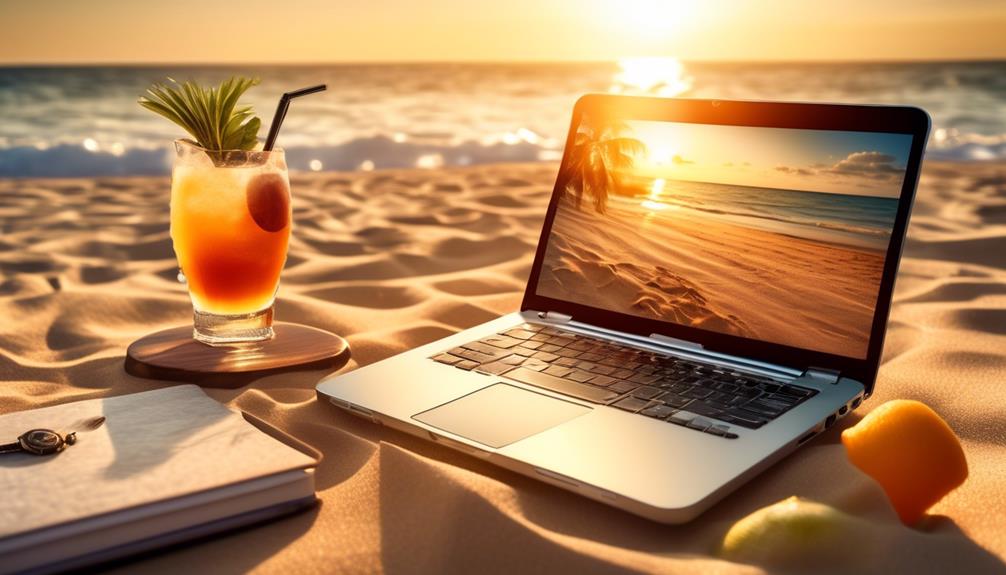
Crafting effective out-of-office messages is an essential aspect of maintaining clear communication while on vacation. When writing these messages, it's important to be polite and professional while providing the necessary information. Here are three effective examples of out-of-office messages that you can use as a template for your own:
- 'I am currently out of the office and will return on [date]. For urgent matters, please contact [colleague's name] at [colleague's email].'
- 'Thank you for your email. I'm out of the office until [date] and will have limited access to email. For immediate assistance, please contact [alternative contact].'
- 'I am on vacation until [date] and won't be checking emails. For urgent matters, please reach out to [colleague's name] at [colleague's email].'
These examples demonstrate a good rule of thumb for crafting effective out-of-office messages. They provide clear information about the duration of the absence, alternative contacts for urgent matters, and set professional expectations for communication while away.
When using these examples, be sure to customize them to fit your specific situation and maintain a polite and professional tone.
Mastering the Art of the Vacation Email
As we focus on mastering the art of the vacation email, it's essential to seamlessly shift from crafting effective out-of-office messages to the nuances of requesting and composing a professional vacation email.
When it comes to requesting time off, knowing how to write a Vacation Leave Request or Time Off Email is crucial. We need to make sure we understand the company vacation policy and use the appropriate request email template. It's important to know the steps for writing a vacation request email, including a concise subject line, specifying the reason for the request, exact dates, preparation steps, and a thank-you note. Additionally, we should ask ourselves if we really need to take those days off, consider the impact on our workload, and reflect consideration for our team.
Understanding different types of vacation request emails, such as reminders, emergency time off, annual vacations, one day off, or canceling a vacation request, is also essential. Before sending a vacation request email, we need to ensure we include emergency contact information if necessary and assure coverage during our absence.
Mastering the art of the vacation email requires attention to detail and adherence to professional etiquette.
Frequently Asked Questions
What Should I Write in a Vacation Email?
We should include the dates of our absence, the reason for our vacation, and who to contact in our absence.
It's important to keep the email brief and to the point, while also expressing gratitude for understanding.
We can reassure the recipient that we'll respond to any urgent matters upon our return.
It's also good to set up an out-of-office auto-reply with the same information.
How Do You Write an Email for Time Off?
We write an email for time off by crafting a clear subject line, stating the purpose, providing specific dates, and outlining a plan for managing responsibilities during absence.
We ensure to include emergency contact information and express willingness to address any concerns. Politeness, professionalism, and appreciation are crucial throughout.
Understanding company policies and considering workload impact on colleagues help in crafting a thoughtful request reflecting consideration for the team.
How Do You Email a Planned Vacation Leave?
When we email a planned vacation leave, it's important to be clear and concise about the dates and reason for our absence. We should also mention who'll be covering for us in our absence and provide any necessary contact information.
It's crucial to ensure that our email is professional and respectful of our colleagues' time and responsibilities. Lastly, we should make sure to set up an out-of-office auto-reply for any incoming emails during our vacation.
How Do I Professionally Say I Am on Vacation?
We inform our colleagues of our vacation by clearly stating the purpose and dates.
We assure them that work will be handled and maintain a polite and professional tone.
We offer to address any concerns and end with a thank you note and openness to discussions.
This approach ensures a professional and considerate communication of our absence.
Conclusion
We understand that taking vacation time can sometimes feel like a burden on our colleagues. However, by following the proper procedures and communicating effectively, we can ensure a smooth transition and minimal disruption.
Our team's support for each other's well-deserved time off strengthens our bond and ultimately leads to a more productive and positive work environment.
Erik – Email, SEO, AI Expert Writer Erik is the strategist, the thinker, and the visionary. His role at Influenctor is pivotal in integrating SEO with AI-driven content strategies. With an extensive background in email marketing and a profound understanding of search engine algorithms, Erik develops innovative strategies that elevate our client’s online presence. His work ensures that our content is seen, felt, and remembered.
How to Write Email
How to Write a Polite RSVP Email
Discover the essential elements for crafting a compelling RSVP email that guarantees a timely and clear response.
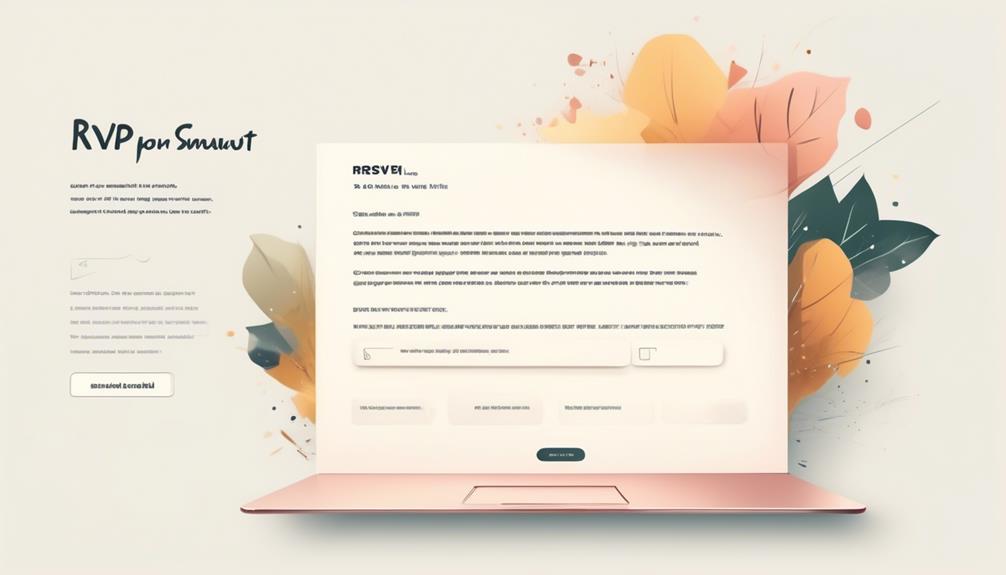
Crafting an RSVP email is akin to creating the ideal invite – each phrase and element reflects the event’s tone and professionalism. We’ve all gotten RSVP emails that puzzle us, leaving us unsure of how to reply or even what we’re replying to.
But fear not, because we've got the key to crafting an RSVP email that will guarantee a timely and clear response. So, whether you're planning a corporate event or a casual gathering, mastering the art of crafting a compelling RSVP email is crucial for ensuring a successful and organized event.
Key Takeaways
- The subject line of an RSVP email should be concise and informative.
- Respond promptly to RSVP emails and acknowledge the invitation with gratitude.
- Craft a professional RSVP email using polite language, proper grammar, and a respectful tone.
- Clearly explain the importance of RSVP, encourage confirmation and provide necessary details in the email.
Understanding the RSVP Email
Understanding the RSVP email is crucial for properly responding to event invitations and ensuring clear communication with the host. When crafting an RSVP email, it's essential to pay attention to the RSVP email subject to convey your response clearly. The subject line should be concise and informative, such as 'RSVP Confirmation for [Event Name]' or 'Reply to RSVP for [Event Date].' This helps the host easily identify and categorize responses.
In addition, it's important to respond to RSVP emails promptly. This not only shows respect for the host's invitation but also helps with event planning. When sending an RSVP via email, make sure to acknowledge the invitation, express gratitude, and provide a clear RSVP confirmation. Clearly state whether you'll attend or not, as well as any additional information requested, such as dietary preferences or the number of guests attending.
Crafting a professional RSVP email involves using polite language, proper grammar, and a respectful tone. The email should be concise, yet thorough, ensuring that all necessary details are included. Moreover, be mindful of any specific instructions provided in the invitation and address them in your response.
Crafting a Clear RSVP Request
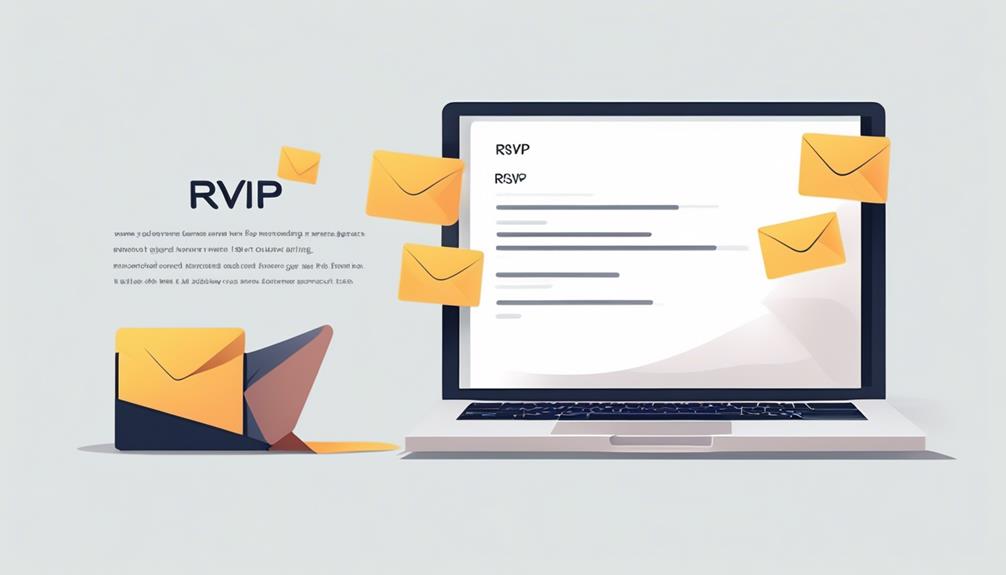
Upon receiving an event invitation, it's essential to clearly articulate the RSVP request, emphasizing the significance of timely responses and providing guidance on crafting a professional and courteous RSVP email.
When crafting a clear RSVP request, it's crucial to clearly explain what RSVP means and why it's important. Encourage recipients to let you know if they can attend and to confirm the exact number of attendees. Provide a standard RSVP format or template to make it easier for invitees to respond.
It's also important to offer RSVP samples or examples to guide recipients on how to write an RSVP email professionally. Emphasize the importance of prompt responses and encourage honesty and openness in their replies.
When making the RSVP request, be clear and direct in asking recipients to confirm their attendance. Use language that's polite and courteous, but also conveys the importance of their response.
Polite RSVP Email Closure
We appreciate the invitation and look forward to the event. It's important to conclude your RSVP email with a polite and friendly closure to leave a positive impression. Expressing gratitude for the invitation and conveying anticipation for the event is essential. Use phrases like 'Looking forward to the event,' 'Thank you for the invitation,' or 'Warm regards' to conclude your email respectfully. It's crucial to ensure that your closing aligns with the tone and formality of the event or the relationship with the host. Signing off with your name or a personalized closing, such as 'Best wishes' or 'Sincerely,' maintains professionalism. When replying, if you cannot attend, please let the host know. Here is an example of a polite RSVP email closure:
| Looking forward to the event | Thank you for the invitation | Warm regards |
|---|---|---|
| Excitement and anticipation | Gratitude | Friendliness |
Closing your RSVP email with warmth and appreciation leaves a lasting positive impression.
Utilizing RSVP Email Templates
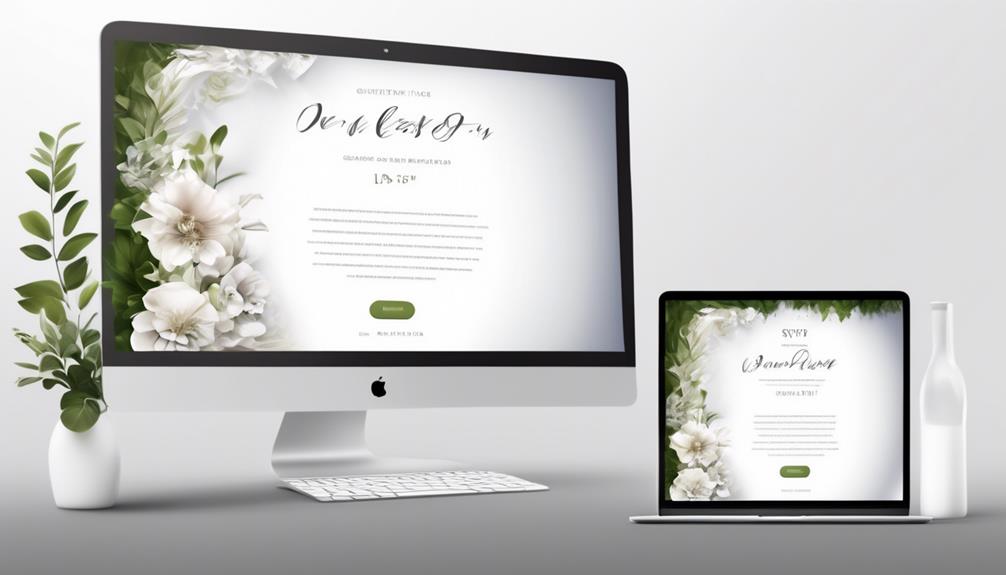
Utilizing email templates can greatly streamline the process of drafting RSVP responses, making the task more efficient and ensuring a consistent and professional tone. When writing invitation emails, using RSVP email templates can save time and effort, especially when responding to multiple invitations. These templates often include standard phrases such as 'Répondez s'il vous plaît,' 'We look forward to seeing you,' and 'Please kindly respond by [event date].' They can also provide guidance on how to address various RSVP responses, such as accepting, declining, or expressing gratitude for the invitation.
In addition to social events, RSVP emails are also crucial in professional settings, such as job applications, where prompt and well-crafted responses are essential. Utilizing templates can help maintain a polished and organized approach, which is particularly important for seating arrangements, dietary requirements, and other logistical considerations.
Mastering RSVP Response Etiquette
Mastering RSVP response etiquette involves understanding the significance of timely and respectful RSVP responses and adhering to established social and professional norms. When crafting an RSVP reply, it's crucial to strike the right tone, conveying your response clearly and professionally.
Whether you're unable to attend or excited to say yes, it's essential to communicate your decision promptly, allowing the host to make necessary arrangements. Politely declining an invitation requires tact and consideration, ensuring that the host understands your decision while expressing gratitude for the invitation.
In professional settings, such as event planning, mastering RSVP response etiquette is paramount for maintaining professional relationships and ensuring smooth coordination. Clear and concise language in RSVP messages is key, as it demonstrates respect for the host's time and effort in organizing the event.
Frequently Asked Questions
How Do You RSVP in an Email Example?
Sure, we can definitely help with that.
When responding to an email invitation, it's important to be polite and timely.
A simple 'Thank you for the invitation. We'll be attending the event' is a good example of how to RSVP in an email. It's concise and clearly conveys your response.
Remember to include all relevant details, such as the date and time of the event, and any plus-ones if applicable.
What Do You Write in a RSVP Response?
We always strive to provide a prompt and detailed response when sending an RSVP.
It's essential to express our gratitude for the invitation, state our intention to attend or regretfully decline, and include any necessary details requested.
Clear communication and a respectful tone are key in ensuring the event planner has the information needed for a successful gathering.
How Do You Confirm Rsvp?
We confirm RSVPs by sending a polite and prompt response to the invitation. It's important to acknowledge the invitation and clearly state our intention to attend or not.
A well-crafted email with a clear subject line and respectful tone can effectively confirm our RSVP. It's also essential to provide the requested response option, whether it's a 'Yes,' 'No,' or 'Maybe,' to ensure proper event planning and organization.
How Do You Politely Ask for Rsvp?
We kindly ask for your RSVP by the indicated date, as it will help us finalize the arrangements.
Your timely response is greatly appreciated.
Thank you for considering our invitation.
Conclusion
We've learned the importance of crafting a clear and engaging RSVP email.
Did you know that 80% of event planners say that receiving timely RSVPs is one of their biggest challenges?
By following the tips outlined and using a well-designed template, we can make the RSVP process smoother for both the host and the guests.
Happy RSVPing!
Erik – Email, SEO, AI Expert Writer Erik is the strategist, the thinker, and the visionary. His role at Influenctor is pivotal in integrating SEO with AI-driven content strategies. With an extensive background in email marketing and a profound understanding of search engine algorithms, Erik develops innovative strategies that elevate our client’s online presence. His work ensures that our content is seen, felt, and remembered.
How to Write Email
How to Write a Status Update Email with Sample
Worried about crafting a compelling status update email?
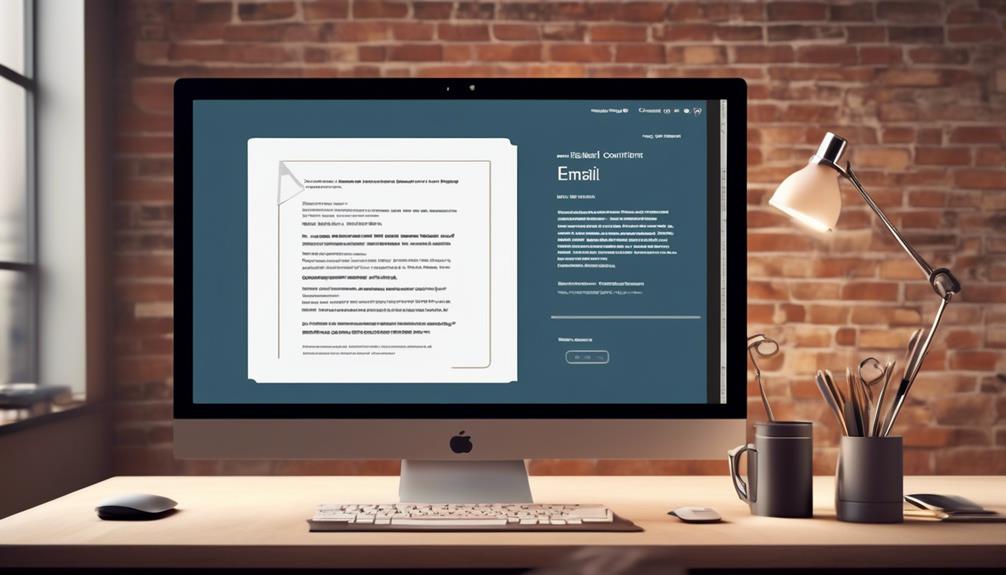
Navigating the realm of professional communication, composing a status update email often resembles guiding a vessel through constantly shifting waters. It’s crucial to keep a consistent direction and offer a transparent progress report on the project. Yet, striking the perfect balance between detail and conciseness poses a significant challenge.
But fear not, as we have gathered some valuable insights and practical tips to help you navigate these uncharted waters and compose an effective status update email that will keep your stakeholders informed and engaged.
Key Takeaways
- Regularly sending status update emails keeps all team members and stakeholders informed and aligned with the project's progress.
- Utilizing email for updates streamlines communication and keeps relevant parties consistently informed.
- Pre-designed project status report templates save valuable time in creating and formatting reports.
- Adaptable templates help project managers maintain consistency in communication and accommodate stakeholders' preferences.
Importance of Status Update Emails
Regularly sending status update emails is a crucial practice for keeping all team members and stakeholders informed and aligned with the progress of a project. The importance of status update emails can't be overstated. It serves as a primary mode of communication for project updates, ensuring that everyone involved is on the same page. This method allows for efficient dissemination of important information, making it easier for all parties to stay abreast of developments.
Whether for internal or external updates, status update emails are a standard and effective practice in the workplace. By utilizing this form of communication, project teams can ensure that all members are well-informed, which is vital for the smooth progression of a project. Furthermore, status update emails facilitate the alignment of all stakeholders, ensuring that everyone is aware of the project's status and any necessary actions.
Benefits of Using Email for Updates

When it comes to keeping all team members and stakeholders informed and aligned with the progress of a project, utilizing email for updates offers a seamless and efficient mode of communication. There are several benefits of using email for updates:
- Efficient Communication: Email provides a quick and direct way to communicate progress and updates to the entire team and stakeholders.
- Documentation: It serves as a documented record of the progress and updates, allowing team members and stakeholders to refer back to previous communications.
- Accessibility: Emails can be accessed at any time, allowing team members and stakeholders to review updates at their convenience.
- Integration: Email updates can be easily integrated with project management tools and calendars, ensuring that everyone is aware of the project's status.
Utilizing email for updates not only streamlines communication but also ensures that all relevant parties are consistently informed about the project's progress. It's a common and effective method of keeping everyone aligned and informed, both internally and externally.
Time-Saving Template Download
We have streamlined the process by providing instant access to pre-designed project status report templates for a time-saving and efficient way to communicate updates. These ready-to-use templates save valuable time in creating and formatting reports, allowing for quick and effective communication of project progress.
The structured format of the templates includes sections for highlighting key updates, task progress, and milestones, ensuring that the information is presented in a clear and concise manner. Additionally, the templates can be easily customized to fit specific project needs, providing flexibility without sacrificing efficiency.
By offering these pre-designed templates, we aim to simplify the process of sending project status updates, enabling professionals to focus on the content and significance of their updates rather than spending excessive time on formatting and organization.
This time-saving template download empowers individuals to craft professional and informative project status reports with ease, enhancing their ability to effectively communicate project updates through email status updates.
Brief Update Email Sample
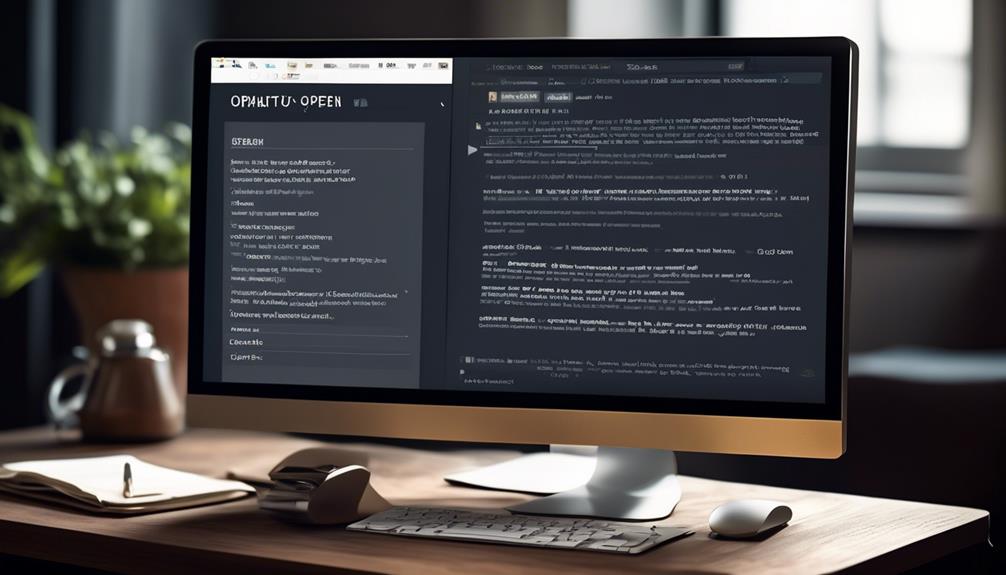
Using a time-saving template, our brief update email sample efficiently conveys key project progress to senior management and high-level executives. This template streamlines the communication process and ensures that essential information is presented in a clear and concise manner. Here's an example of what our brief update email sample might look like:
- Subject: Project Status Update
- Body:
- Accomplishments: Successfully completed phase one of the project ahead of schedule.
- Challenges: Encountered minor setbacks due to unforeseen resource constraints.
- Next Steps: Planning to reallocate resources to mitigate potential delays in the upcoming phase.
- Assistance Needed: Seeking guidance on optimizing resource allocation for the remainder of the project.
This format allows for a quick overview of the project's status, highlighting key achievements, challenges, and the necessary support or guidance required.
By utilizing such a structured approach, project managers can effectively send project update emails that provide valuable insights to stakeholders while saving time and effort in composing detailed status reports.
Regular use of project update email templates ensures consistent and transparent communication, enabling senior management to stay informed and make informed decisions.
Detailed Tracking Update Email
Analyzing project progress and providing detailed updates is crucial for ensuring transparency and accountability within the team. When sending a detailed tracking update email or a weekly project update, it's important to include specific information about the project's status, progress, and any challenges faced. Below is a sample table that can be included in a detailed tracking update email to effectively communicate the project's status to the team:
| Project Aspect | Update |
|---|---|
| Milestones | Completed milestone 1; working on milestone 2 |
| Issues/Challenges | Faced delays due to unexpected resource shortage |
| Next Steps | Plan to allocate additional resources for support |
Including a table like this in your project status email provides a clear and concise overview of the project's current status. This format allows for easy digestion of information and facilitates quick understanding of the update on the project. When crafting a detailed tracking update email, ensure that the language is professional, with a focus on accuracy and clarity. This email sample can serve as a guide for effectively communicating project progress to the team.
Client Project Update Email
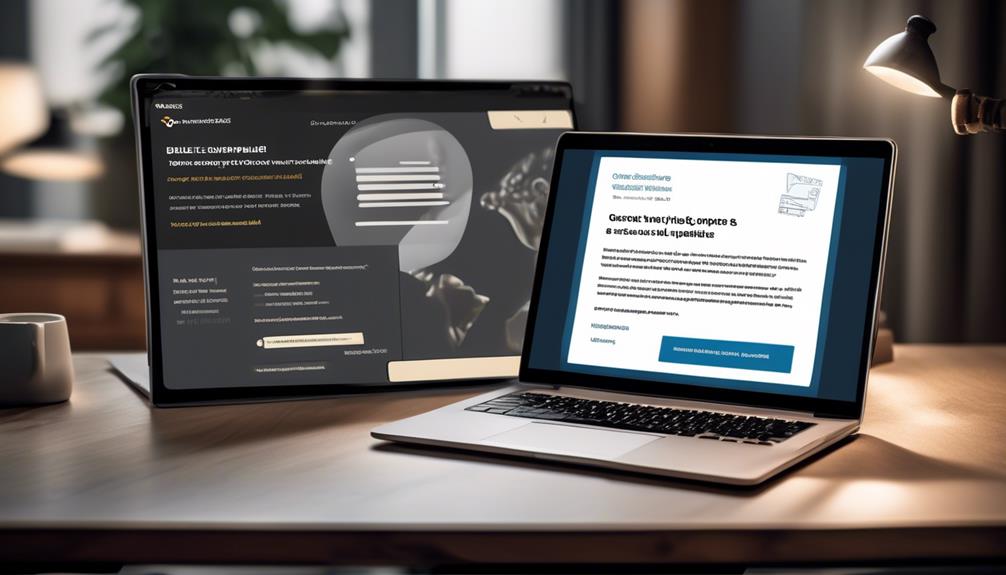
Let's talk about the essential elements of a client project update email.
We'll cover the project's progress, outline the next steps, and clearly communicate any action required from the client.
These key points will ensure that our client project update emails are informative and actionable, fostering strong communication and project success.
Project Progress Update
Updating our client on the progress of the project is essential for maintaining clear communication and ensuring their satisfaction with our work. Our project progress update email template includes the following key points:
- Summary of the current project status
- Milestones achieved and upcoming targets
- Issues or challenges encountered, along with proposed solutions
- Request for any additional input or feedback from the client
Next Steps
What are the next steps in the project that we should communicate to the client in our upcoming update email?
As a project team, it's crucial to outline the upcoming milestones and actions to be taken in the next phase of the project.
In the status update email sample, we need to emphasize the progress made on the project so far and clearly articulate the specific tasks and objectives that will be undertaken next.
This includes highlighting any potential challenges or dependencies that might impact the timeline or deliverables.
By presenting a comprehensive overview of the next steps, we can ensure that the client is well-informed and aligned with the project's trajectory.
This proactive approach fosters transparency and instills confidence in our ability to drive the project forward effectively.
Action Required
In our upcoming client project update email, we'll outline the specific actions required to ensure continued progress and alignment with project objectives. Please let's know if there are any questions or concerns regarding the action items provided.
The following are the key action items that require immediate attention:
- Review the updated project timeline and provide feedback
- Confirm stakeholder availability for the upcoming project review meeting
- Validate the accuracy of the project budget and resource allocation
- Send a project status update to the client for their review and input
We aim to provide a comprehensive update on our current status of the project and appreciate your prompt attention to these action items. Thank you for your ongoing support and collaboration.
Request for Status Update Email

We often find ourselves needing to request updates on the progress of various tasks or projects. Whether it's a reminder for an update or a formal request for a progress report, knowing how to craft a clear and effective status update email is crucial.
In the next section, we'll discuss the key points to consider when requesting a status update and offer practical tips for ensuring a prompt and comprehensive response.
Reminder for Update
Asking for a status update via email can help to ensure that all pertinent information is accurately documented and communicated. When requesting a status update, it's important to keep your email concise and professional.
We recommend including the following in your reminder email:
- A polite opening that acknowledges the recipient's workload
- A clear request for the specific information or update needed
- An explanation of the importance of the update
- A note of appreciation for their prompt response
Requesting Progress Update
Requesting a progress update from team members ensures that everyone is informed about the current status of the project. When crafting a request for a status update email, it's essential to be clear and concise.
A well-structured email sample should include specific details about the project(s) in question, the purpose of the update, and a request for a meeting if necessary. It's also beneficial to provide a framework for the update with questions that prompt the team to address key areas of progress.
Manager Update Email Example
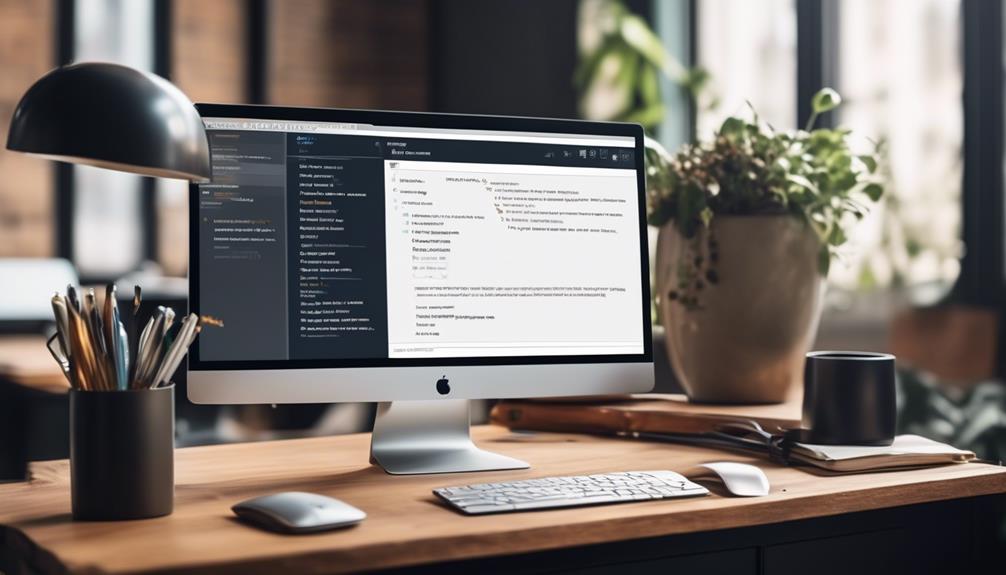
The manager update email example demonstrates the effective communication of project progress and key developments to stakeholders and team members. When crafting a manager update email, it's crucial to ensure clear and concise communication.
Below is an example of a well-structured manager update email:
- Introduction: Briefly summarize the purpose of the email and express gratitude for the recipients' ongoing support.
- Project Status Update: Provide a high-level overview of the project's current status, including any major milestones achieved or potential roadblocks encountered.
- Request for Meeting: Express the need for a meeting to discuss specific aspects of the project in more detail, allowing for interactive discussions and decision-making.
- Update with Questions: Include any pertinent questions or concerns that require immediate attention, encouraging recipients to provide input or clarification.
Daily Status Update Email Template
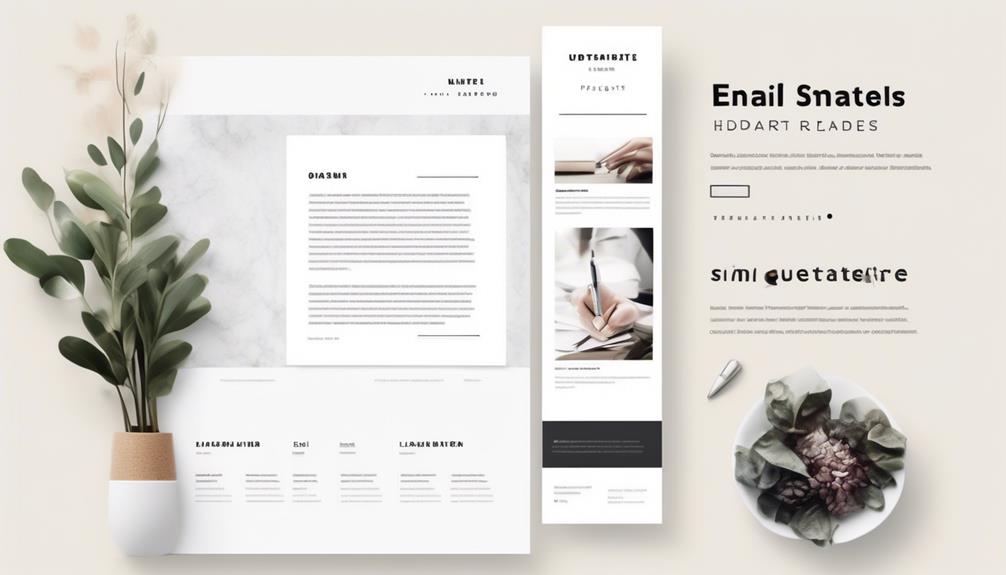
Let's break down the essential elements of a daily status update email template:
- The structure: The email should have a clear and organized structure that is easy to follow. This can be achieved by using headings, bullet points, and numbered lists to separate different sections and make the information more digestible.
- Content organization: It is important to organize the content in a logical manner. Start with a brief introduction or opening statement to provide context. Then, divide the main body of the email into relevant sections, such as project updates, tasks completed, upcoming deadlines, and any issues or challenges.
- Clear communication: Clarity is key when it comes to status update emails. Use simple and concise language to convey the necessary information. Avoid jargon or technical terms that may not be familiar to everyone. Be specific and provide relevant details, such as dates, deadlines, and progress percentages.
These points are crucial for ensuring that the email effectively conveys the necessary information in a concise and understandable manner. By focusing on these aspects, we can streamline the process of providing daily updates to keep everyone informed and on track.
Template Structure
In crafting a daily status update email template, we aim to streamline the communication of project progress and ensure clarity in conveying the information.
Our template structure includes:
- Clear subject line indicating the purpose of the email.
- Brief introduction summarizing the key points.
- Bulleted list of project updates for easy readability.
- Closing remarks expressing availability for further inquiries.
This format ensures that the status update email is concise, informative, and easily understandable for the recipients.
Content Organization
After establishing a structured template for our daily status update emails, we can now focus on optimizing the content organization to ensure effective communication of project progress.
When writing a project status email sample, it's crucial to arrange the content in a clear and logical manner. Start with a brief introduction, followed by a concise overview of accomplished tasks, ongoing activities, and any challenges encountered.
Use bullet points or numbered lists to enhance readability and emphasize key points. Additionally, include a section for upcoming tasks and action items, ensuring that the email provides a comprehensive snapshot of the project's status.
Clear Communication
Enhancing project communication through a well-structured daily status update email template is vital for ensuring transparency and facilitating informed decision-making. When crafting daily status update emails, it's crucial to prioritize clear communication to effectively convey project progress and address any questions or concerns.
To achieve this, consider the following:
- Use concise and specific subject lines to highlight the email's purpose.
- Utilize bullet points for easy readability and to emphasize key updates.
- Clearly outline action items and any outstanding questions to prompt timely responses.
- Ensure the tone remains professional and encourages open communication.
Stakeholders Update Email Template
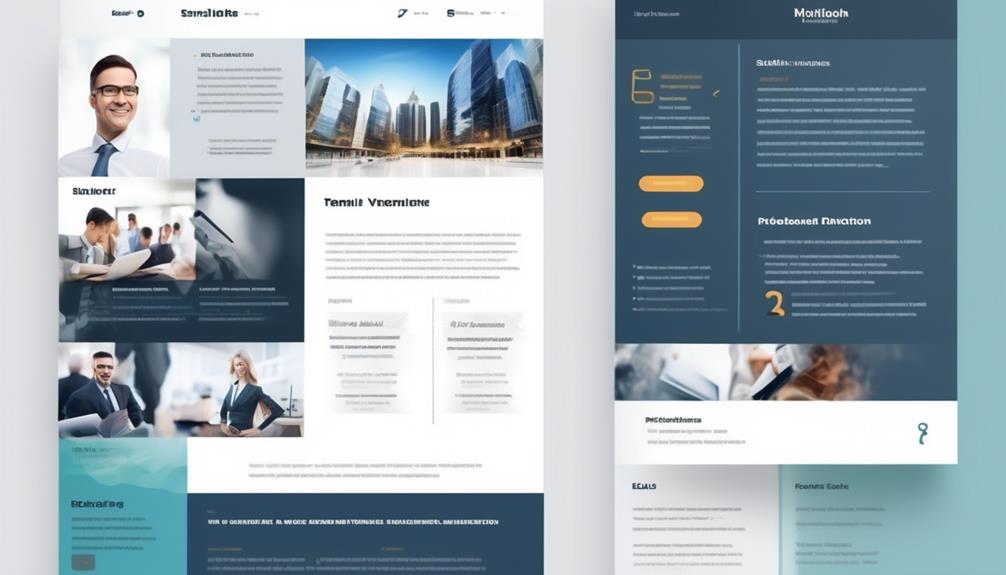
Crafting a stakeholder update email template streamlines communication and ensures that all invested parties are kept informed of project progress and key developments. When creating a stakeholders update email template, it's essential to consider the communication style that resonates with the recipients.
The template should be clear, concise, and professional, providing a snapshot of the project status report. It should include essential details such as project milestones achieved, upcoming tasks, and any potential roadblocks. The purpose of the stakeholders update email template is to provide a quick overview of the project's status, allowing recipients to grasp the key points efficiently.
To maintain an effective communication flow, the stakeholders update email template should be sent regularly, according to the project's cadence. This ensures that stakeholders are consistently informed about the project's progress and are aware of any shifts in the timeline or scope.
Additionally, the email template should be adaptable, allowing for both brief and detailed status updates, depending on the stakeholders' preferences. By using a ready-to-use stakeholders update email template, project managers can save time while ensuring that all relevant parties are kept in the loop.
Decision-Seeking Email Template

Let's talk about the Decision-Seeking Email Template.
When we need to gather input or opinions on a decision, this template provides a structured approach. It helps us outline the decision, present options, and request feedback in a professional manner.
By using this template, we ensure that our emails are clear and concise, making it easier for recipients to understand the decision at hand and provide meaningful input.
First, we start by introducing the decision and providing some background information. This helps recipients understand the context and why their input is valuable.
Next, we present the options or alternatives that we are considering. It's important to lay out the pros and cons of each option, so that recipients can make an informed decision.
After presenting the options, we then request feedback or input from the recipients. We can ask specific questions or simply ask for their thoughts and opinions. It's important to be open to different perspectives and ideas.
Finally, we close the email by expressing gratitude for their time and input, and let them know how their feedback will be used in the decision-making process.
Using this template not only helps us gather valuable input, but also shows our professionalism and respect for others' opinions. It ensures that our decision-making process is inclusive and collaborative.
Subject: Help Needed
To compile a comprehensive status update report, we're requesting input from all team members on the latest updates regarding tasks, risks, and issues. Your contribution is crucial in ensuring the accuracy and completeness of the report.
Here are the details for your input:
- Task Progress: Provide updates on the status of your assigned tasks.
- Risk Assessment: Identify any potential risks that have arisen or may impact the project this week.
- Issue Resolution: Report any issues that require attention or resolution.
- Support Needed: Indicate if you require assistance or support in any aspect of your tasks.
Please use email to send your updates and any feedback. Your prompt response is appreciated, but feel free to reply at your convenience. Your contribution is valuable in writing effective email updates for the project.
Seeking Your Input
We appreciate the valuable contributions received for the status update report and now look forward to incorporating your input into the decision-making process regarding the project's next steps. Your insights are crucial for us to make well-informed decisions.
We invite you to share your thoughts on the current status and any concerns you may have. Your input will greatly impact the direction of the project. Please take a moment to review the attached update and provide your feedback by replying to this email by [date].
Your collaboration is key to the success of this project, and we value your expertise. Thank you for your continued support in ensuring the project's progress aligns with our goals.
Your Opinion Matters
Seeking your valuable input on the current status of the project is essential for making informed decisions and ensuring its successful progression. Your opinion matters greatly, and we invite you to share your insights and expertise. As we strive for excellence, your input will help us navigate any challenges and capitalize on opportunities.
Your thoughtful responses to the following questions will guide our next steps:
- What're your thoughts on the current project status?
- Are there any potential roadblocks that you foresee?
- What adjustments or improvements do you recommend?
- How can we enhance collaboration and communication within the team?
Your thoughtful input will contribute to the overall success of the project. Please take a moment to share your valuable perspective with us. We truly appreciate your time and expertise.
Minutes of Meeting Email Template

A well-structured Minutes of Meeting Email Template offers a comprehensive framework for capturing and disseminating key meeting details, enhancing accountability and progress tracking. When utilizing this template, the email should include the project name, week number, and date of the meeting for easy reference.
The minutes of meeting section should encompass a detailed account of the discussions, decisions made, and action items assigned to each attendee. Additionally, the template should incorporate a section for follow-up tasks, ensuring that responsibilities are clearly outlined and deadlines are established.
This email sample should be clear, concise, and professional, providing an organized summary of the meeting that enables recipients to understand their roles and responsibilities. By adhering to this template, the email ensures that all essential information from the meeting is captured and shared with the participants, enhancing transparency and accountability.
Furthermore, the structured format of the template streamlines the process of creating and distributing meeting minutes, saving time and ensuring consistency across all communications related to the meeting.
Action Items Tracking Email Template
In ensuring effective project management, tracking action items through regular status update emails is a standard practice that facilitates efficient communication with the project team and stakeholders. This method of communication allows for the easy dissemination of important information both internally and externally.
Here's an effective action items tracking email template:
- Subject Line: Clearly indicate that the email pertains to tracking action items.
- Introduction: Briefly summarize the purpose of the email and the status of the project.
- Action Items List: Clearly list each action item, its current status, and the responsible party.
- Next Steps: Clearly outline the next steps or expectations for the recipients.
Using this template ensures that all recipients are informed about the current status of action items and are clear about their responsibilities. It also provides a structured format that allows for easy reference and follow-up.
Tips for Effective Email Communication

Effective email communication is essential for successful professional interactions in the modern workplace.
When it comes to email communication, there are several tips that can enhance effectiveness.
Firstly, it's crucial to be clear and concise in your emails. This means getting straight to the point and avoiding unnecessary details.
Additionally, using a descriptive and informative subject line can help the recipient understand the purpose of the email at a glance.
Another important tip is to consider the tone and language used in the email. It's important to maintain a professional tone while being polite and respectful.
Furthermore, organizing the content of the email in a logical manner, using paragraphs and bullet points where necessary, can make it easier for the recipient to follow.
Lastly, always proofread your email before sending it to ensure there are no errors in grammar, spelling, or formatting.
Ready-to-Use Project Update Templates
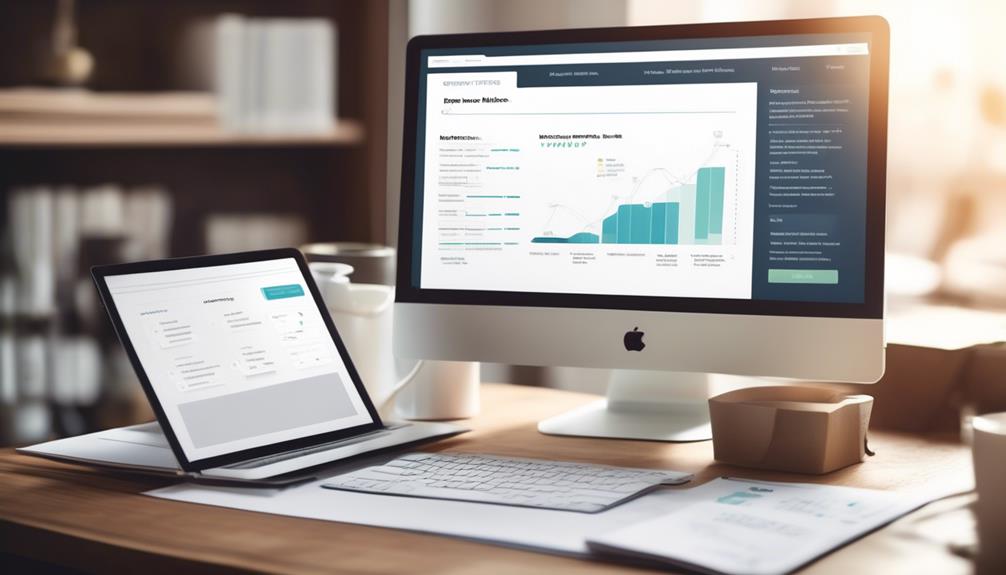
Enhancing email communication with effective project update templates can streamline the process of conveying important project information to both internal and external stakeholders. Ready-to-Use Project Update Templates offer a convenient solution, saving time and effort by providing quick access to project updates.
These templates include snapshots of subproject progress, helping to track milestones for each team. Additionally, they're suitable for both internal and external updates, fostering clear and concise communication.
The templates also offer a professional and informative update for clients, addressing critical KPIs and project information. Using Text Blaze templates enhances clarity and readability of information, ensuring consistency in communication.
Can I Use the Same Email Format for Writing Availability as I Would for a Status Update?
Yes, you can use the same email format for writing availability in email as you would for a status update. It’s important to clearly communicate your availability in a professional manner, whether it’s for a project update or letting someone know when you’ll be out of the office.
Frequently Asked Questions
How Do You Write an Email for a Status Update?
We write status update emails by following a specific structure.
First, we clearly state the current progress of the project or task.
Next, we address any challenges that have been encountered, explaining how they are being addressed or resolved.
After that, we outline the next steps or actions that will be taken.
It's important to be concise and to the point in these updates, using bullet points or numbered lists for clarity.
We also make sure to address any specific needs or concerns that the recipient may have.
Finally, we end the email with a call to action if necessary, encouraging the recipient to take any required actions or provide any necessary input.
Throughout the email, we maintain a friendly and professional tone to ensure positive communication.
How Do You Politely Email an Update?
We politely email an update by:
- Expressing gratitude
- Providing a clear and concise overview of the progress
- Outlining any necessary actions or next steps
We maintain a professional tone, ensure the information is relevant and valuable to the recipient, and use polite language throughout the email. It's important to be respectful of the recipient's time and convey the message in a courteous and considerate manner.
How Do You Write an Email to Update Information?
We write update emails by crafting clear and concise messages that convey the most important information to our audience.
We use active voice and personalized content to engage and inform our readers.
Our goal is to ensure that the message is professional, engaging, and easy to understand.
We make use of templates and bullet points for simplicity and clarity, saving time and providing the necessary details for our recipients.
How Do You Present Status Updates?
We present status updates by using clear and concise language, highlighting key updates, and organizing information in a logical manner. This ensures that our audience can quickly grasp the current state of affairs.
We aim to maintain transparency, accountability, and provide stakeholders with the necessary information for effective decision-making. Our approach emphasizes efficiency, clarity, and relevance to the audience's needs.
Conclusion
In conclusion, regular status update emails are essential for keeping stakeholders informed and ensuring effective decision-making.
For example, by using a detailed tracking update email template, our team was able to provide comprehensive explanations of current tasks, leading to better understanding and collaboration among team members.
By utilizing ready-to-use project update templates, we were able to save time and maintain transparency throughout the project.
Effective communication through email is crucial for project success.
Natali – Editor in Chief (Strategy and Mastery, AI Expert) Natali, our Editor in Chief, is the driving force behind our content’s strategic direction. With a keen eye for detail and a deep understanding of market trends, Natali ensures that our content is top-notch and strategically aligned with our client’s goals. Her expertise in AI helps to seamlessly integrate advanced technology into our marketing strategies, pushing the boundaries of conventional marketing.
-

 Email Automation4 weeks ago
Email Automation4 weeks agoAutomated Email Marketing 101: A Beginner's Tutorial
-

 Email Warmup1 month ago
Email Warmup1 month agoWarm Follow-Up Email
-

 Email Design Hub2 months ago
Email Design Hub2 months ago3 Essential Tools for Email Marketing Design Success
-

 Email Marketing1 month ago
Email Marketing1 month agoWhat Is Email Marketing Advantages and Disadvantages
-

 Email Marketing1 month ago
Email Marketing1 month agoWhy Email Marketing Is Effective
-

 Email Template1 month ago
Email Template1 month agoCrafting the Perfect Book Club Invitation Email Template
-

 Search Engine Optimization4 weeks ago
Search Engine Optimization4 weeks agoSEO Checklist: Enhance Your Site’s Performance
-

 Email Marketing1 month ago
Email Marketing1 month agoDoes Email Marketing Work in 2024



















